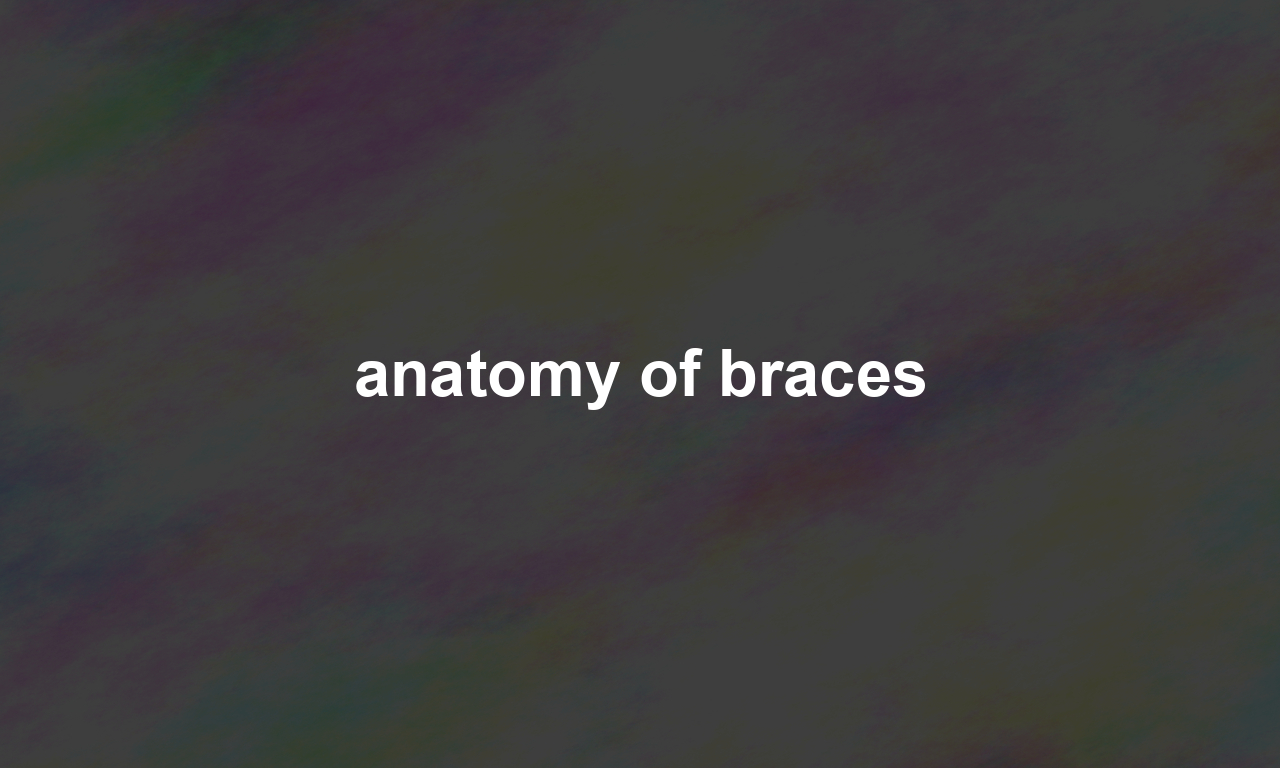Brackets: The Building Blocks
The journey to a perfect smile starts with the brackets. These small, square pieces are typically made of stainless steel or ceramic and are adhered to the front of each tooth using a special orthodontic adhesive.
- Material: Brackets can be made from various materials, including metal and ceramic. Metal brackets are the most common and durable, while ceramic brackets are less noticeable but more fragile.
- Function: Brackets serve as handles for the archwire, allowing the teeth to move in the desired direction.
Archwire: The Guide
The archwire is the main component that drives the movement of your teeth. It is threaded through the brackets and exerts gentle pressure to shift your teeth into their ideal positions.
- Material: Archwires are usually made from stainless steel, nickel-titanium, or beta-titanium. Each material has its unique properties that cater to different stages of treatment.
- Function: The archwire acts as a track, guiding the movement of the teeth and providing the necessary force to realign them.
Forces at Play
The archwire works in tandem with the brackets to create pressure points on the teeth. This pressure gradually moves the teeth by reshaping the bone in the jaw. Initially, the pressure might cause some discomfort, but it subsides as your mouth adjusts.
Elastic Ligatures and Bands
Ligatures are tiny elastic bands or sometimes metal ties that hold the archwire to the brackets. They come in various colors, allowing for a bit of personalization in your braces.
- Types of Ligatures: Most commonly, ligatures are elastic, but self-ligating brackets use a special clip to hold the archwire.
- Function: They keep the archwire firmly in place, ensuring effective force distribution.
Power Chains
For more complex movements or to close gaps between teeth, orthodontists may use power chains. These are connected strings of elastic ligatures that apply additional force.
Orthodontic Bands
Bands are metal rings that encircle the molars. While not always necessary, they provide greater stability for the braces.
- Material: Typically made of stainless steel.
- Function: Bands anchor the brackets and archwire on the back teeth, providing additional support for the system.
Buccal Tubes, Springs, and Expanders
Buccal tubes are metal tubes attached to the orthodontic bands that help anchor other parts of the braces, like elastics or headgear. Springs and expanders are also used sometimes for particular orthodontic cases.
Springs
Springs may be added to the archwire to create space between teeth or to add additional pressure for more complex movements.
Expanders
For patients with narrow jaws or misalignment issues, expanders can help widen the upper jaw.
- Palatal Expanders: These are used to widen the upper jaw by applying gradual pressure.
- Function: These devices are usually needed for younger patients whose jaws are still growing.
Elastics and Headgear: Additional Helpers
In some cases, elastics (rubber bands) or headgear are needed to provide extra force to correct specific orthodontic issues.
Elastics
- Connection Points: Elastics are usually attached to hooks on the brackets and are removable.
- Function: They help in correcting bite issues by applying additional pressure.
Headgear
Headgear is an external device used in more severe cases to guide the growth of the face and jaws.
- Parts: It consists of a strap worn around the head and a metal frame attached to the braces.
- Function: Headgear helps in correcting major misalignments and is usually worn part-time.
Maintaining Your Braces
Maintaining braces requires diligent oral hygiene and regular orthodontic appointments. Here are a few tips:
- Use a soft-bristle toothbrush to clean around the brackets and archwire.
- Floss daily using a floss threader to navigate around the braces.
- Avoid hard and sticky foods that can damage the braces.
Regular check-ups with your orthodontist are crucial for ensuring your treatment is progressing as planned. If any component breaks or loosens, you should contact your orthodontist immediately.
Conclusion
The anatomy of braces is a fascinating subject that combines engineering and medical science to create a symphony of forces moving towards one goal: a beautiful, healthy smile. Whether you’re considering braces for yourself or your child, understanding each part and its role can help demystify the process.
For additional reading, consider visiting Mouth Healthy by the American Dental Association, or check out the American Association of Orthodontists for more detailed information on orthodontic treatments.

